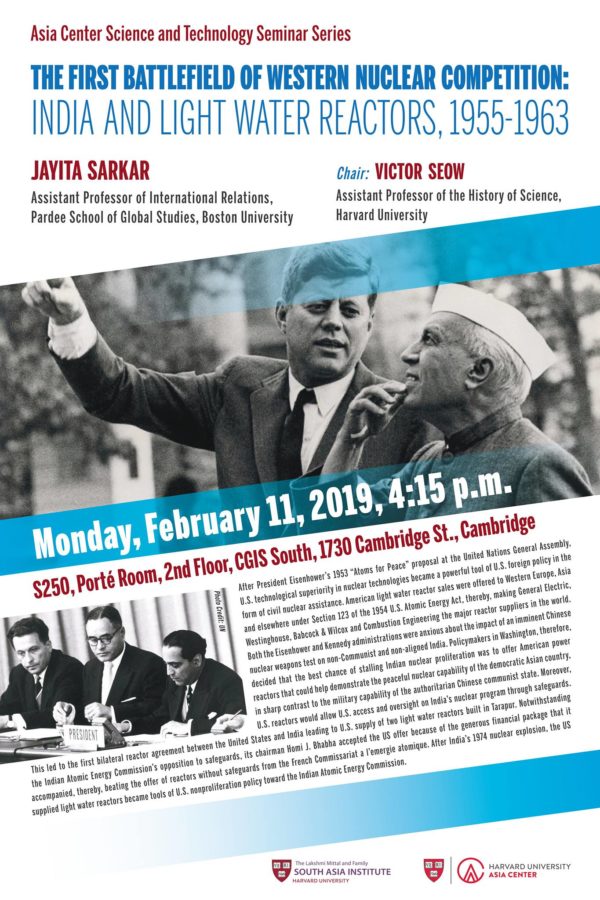This event is co-hosted by the Asia Center and the Lakshmi Mittal and Family South Asia Institute.
As part of the Asia Center’s Science and Technology Seminar Series, Professor Jayita Sarkar of the Pardee School of Global Studies at Boston University will discuss nuclear policy in India.
After President Eisenhower’s 1953 “Atoms for Peace” proposal at the United Nations General Assembly, U.S. technological superiority in nuclear technologies became a powerful tool of U.S. foreign policy in the form of civil nuclear assistance. American light water reactor sales were offered to Western Europe, Asia and elsewhere under Section 123 of the 1954 U.S. Atomic Energy Act, thereby, making General Electric, Westinghouse, Babcock & Wilcox and Combustion Engineering the major reactor suppliers in the world. Both the Eisenhower and Kennedy administrations were anxious about the impact of an imminent Chinese nuclear weapons test on non-Communist and non-aligned India.
Policymakers in Washington, therefore, decided that the best chance of stalling Indian nuclear proliferation was to offer American power reactors that could help demonstrate the peaceful nuclear capability of the democratic Asian country, in sharp contrast to the military capability of the authoritarian Chinese communist state. Moreover, U.S. reactors would allow U.S. access and oversight on India’s nuclear program through safeguards. This led to the first bilateral reactor agreement between the United States and India leading to U.S. supply of two light water reactors built in Tarapur.
Notwithstanding the Indian Atomic Energy Commission’s opposition to safeguards, its chairman Homi J. Bhabha accepted the US offer because of the generous financial package that it accompanied, thereby, beating the offer of reactors without safeguards from the French Commissariat a l’emergie atomique. After India’s 1974 nuclear explosion, the US supplied light water reactors became tools of U.S. nonproliferation policy toward the Indian Atomic Energy Commission.
Victor Seow, Assistant Professor of the History of Science at Harvard University, will chair this lecture.

